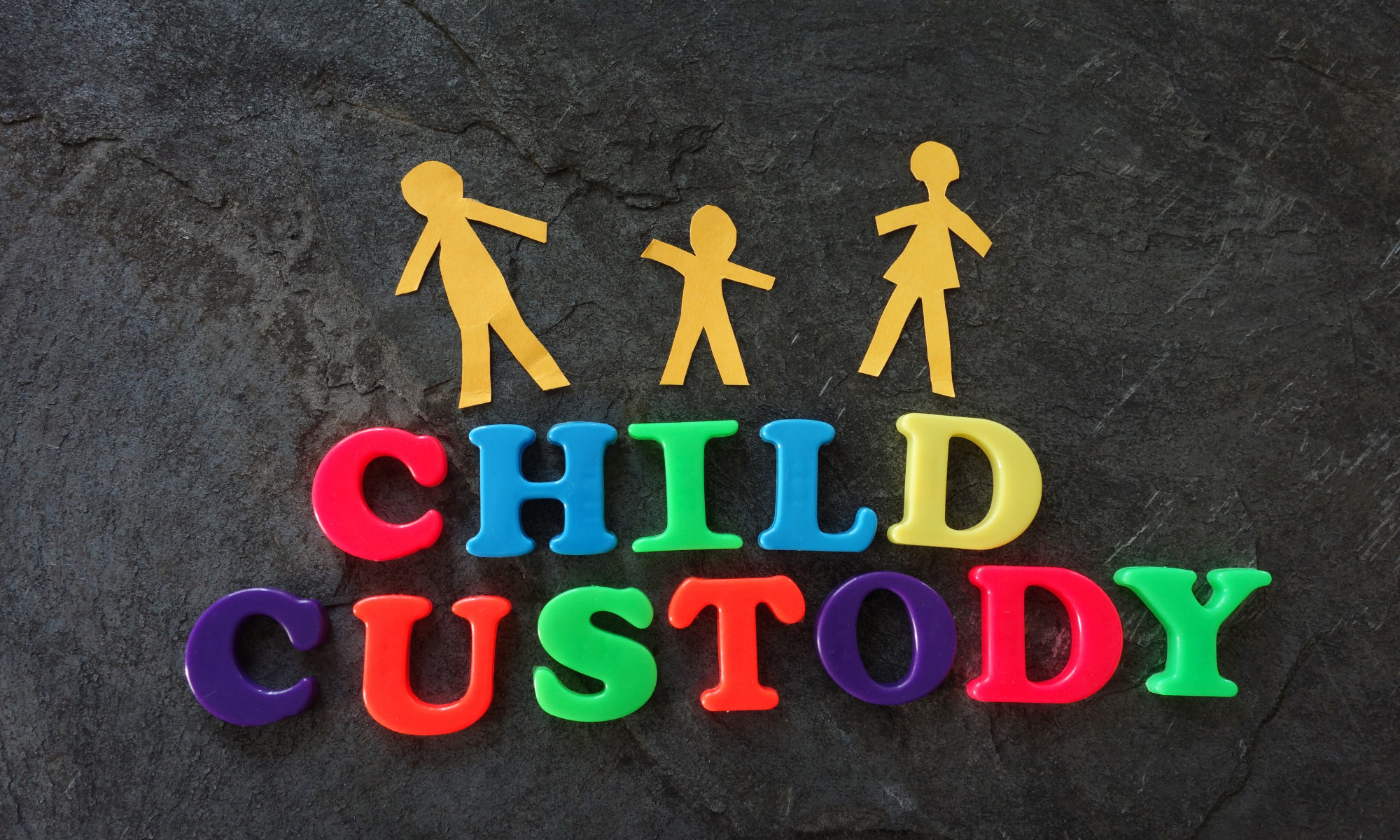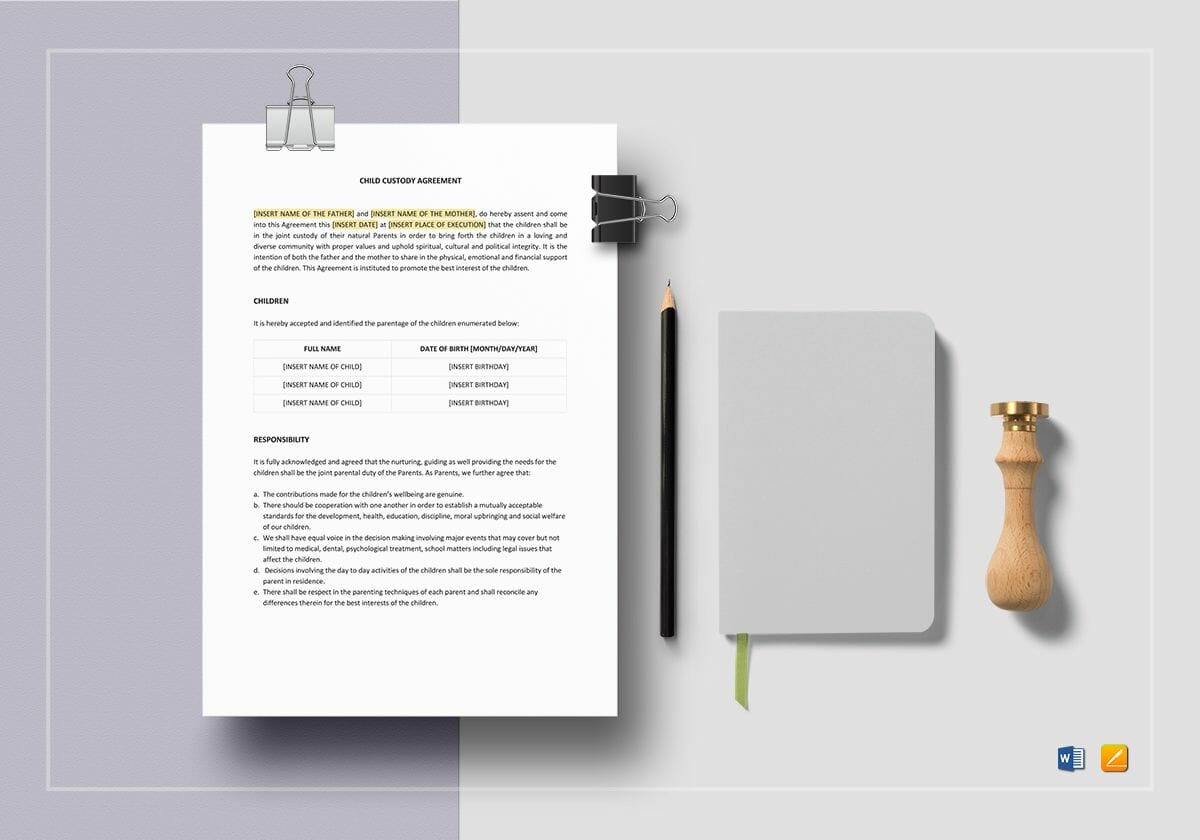Did you know that between 40% and 50% of married couples in the US end up getting a divorce? This is a common occurrence, which shows that it’s right for many people. However, if you have a family, the divorce process can have added complications such as joint custody.
If you’re currently going through a divorce, you’re probably curious about joint custody. You and your separated partner want to find an arrangement that works for you.
Divorce is already a difficult process. You want to make it go as smoothly as possible. One of your biggest worries is how the divorce will affect your child or children.
In addition to all the emotional stress you’re experiencing, your may feel stressed about these arrangements.
How can you ensure that, in this time of instability, your children feel stable and happy?
This guide on different kinds of joint custody models can help. Once you understand what a joint custody agreement is and how to plan yours, you’ll feel more at ease.
You can know that your children will be better off because of this arrangement. Read on to learn more.
What is Joint Custody?
Before we review the different types of joint custody models, I’ll answer the question, “What is joint custody?” Joint custody occurs when parents who don’t live in the same residence both choose to raise their children.
There are some details when it comes to joint custody, which we’ll review next.
Joint custody includes sharing custody, physical control, and decision-making responsibilities regarding their children. This does not only have to occur once you are divorced.
This can occur if you never lived together, are no longer living together, are separated, or are divorced.
Now that I’ve reviewed what joint custody is, I’ll review its legal definitions. Joint custody can be defined in three ways legally.
These are joint legal custody, joint physical custody, and the combination of joint legal and joint physical custody.
It’s important to note that joint physical custody is related to where (and with whom) your child or children live. Legal custody covers additional features such as decision-making responsibilities about your child or children.
Now, let’s review different joint custody models.
Joint Custody Models
If possible, it’s best to come up with a joint custody model with your separated partner. While I understand that it can be challenging to communicate, it’s important to try. This is because, otherwise, it will be up to the courts.
This can be difficult for your children to go through. Why?
This is because your child or children may not understand everything that’s happening during the divorce process. Instead of understanding that you care, they will think you don’t care enough to make custody arrangements yourself.
For this reason, if possible, you should draw up a joint custody schedule with your separated partner. Knowing which types of joint custody schedules work can be helpful. Let’s review those now.
Alternating Weeks
One of the most common types of joint custody models is alternating weeks. With this model, your child or children spend alternating weeks with each parent. One week with you, one week with your separated or divorced partner.
Here are some more details on how it works.
Parents usually have children switch from one home to another on Friday, Saturday, or Sunday. This often is less stressful for children since weekdays might be more complicated logistically.
There are also requirements related to this arrangement.
These requirements are requirements present in many joint custody schedules. In each home, there needs to be a fully functional living space. There should also be fully functional bedrooms.
Here are some additional tips for this joint custody arrangement.
In each home, keep your kids’ favorite electronics, toys, and a wardrobe. Otherwise, your children will feel like they have to pack up their whole life each time they switch. This won’t really make them feel “at home.”
There’s more to consider regarding your children. The alternating week joint custody agreement works best for older children. It’s also suitable for younger children who are okay with spending a week away from one parent.
If you aren’t sure, speak with your children about it this arrangement. Now, let’s move onto the next one.
Alternating Weeks With a Midweek Visit
When you’re using the alternating weeks with a midweek visit model, it’s almost the same as above. However, the difference is that one parent will visit in the middle of the week. While this is a great solution, it has logistical issues.
It’s a great solution because your children won’t have to go as long without seeing each parent. The logistical issues are that it can be difficult to plan.
First of all, there are activities your children have that might be difficult to plan around. Let’s review those.
These activities could include homework time, study groups, or extracurricular activities like dance, music, or sports. To avoid interrupting your children’s schedules, you need to plan around these activities.
There are creative ways to do this.
One creative solution is to pick your children up, take them to their activity, and bring them back home. Then, you can stay for dinner. This way, you can spend time with them during your visit without interrupting their schedule.
Let’s move on now to the next arrangement.
Alternating Weeks With a Midweek Overnight
Another alternating weeks option is the one that has a midweek overnight. In this joint custody arrangement, your children will stay one night a week at the other parent’s home. This is a solution so that they don’t have to go a full week without seeing a parent.
Here’s how to plan it most effectively.
Tuesday or Wednesday is probably the best night for the midweek overnight. This way, your child won’t have to go too long without seeing the other parent. However, there are some logistics to consider.
Like with the last arrangement, you need to make room for your child’s activities.
Additionally, if your children are older, let them decide which night is their midweek overnight. It’s important for them to have a voice about what they do with their nights.
You could even offer additional flexibility.
For example, some nights they could do a midweek overnight, but on others, the parent would come over for dinner. Be flexible too when it comes to schoolwork, just as skipping an overnight if they have a big test the next day.
Now that we’ve reviewed how to plan alternating weeks with a midweek overnight, we’ll move on to the next joint custody arrangement.
2-2-3 Rotation Schedule
When you have a 2-2-3 rotation schedule, it works like this. Your child spends 2 days with one parent. Then, they spend 2 days with the other parent. Then, they spend 3 days (ideally, Friday-Sunday) with the first parent they spent time with. Then, it flips.
It flips like this. Your child spends 2 days with the parent who only had 2 days the week before. Then, they spend 2 days with the parent who had 5 days the week before.
Then, they switch again for the next 3 days (ideally, Friday-Sunday).
With this last switch, it would be with the parent they spent 2 days with the week before. There are two reasons why this is a good schedule.
The first reason is that children won’t have to spend long periods of time without one parent. The second reason is that parents can have alternating weekends. This may be easier on your schedules, too.
However, there are some limitations to consider.
The first of these limitations is that this schedule works best for parents who live close to each other. Otherwise, it would be too difficult to make the switch so many times. You also need to think about limitations related to age.
For young children, it can be challenging to move constantly like this. For infants, it’s been shown that attachment insecurity is linked to frequent overnights.
As a result, you should think about the ages of your children before choosing this schedule. Let’s move on to the next one.
3-3-4-4- Rotation Schedule
This joint custody model works the same as the one above. However, instead of 2 days, then 2 days, and then 3 days, it’s 3 days, 3 days, 4 days, 4 days. There are some benefits to this schedule. Let’s review those benefits.
This schedule is easier for your children because they spend more time at each residence. This will make their life feel a bit more stable. It also means that your children will get to see a parent each weekend, which means more fun for them.
Here’s an additional benefit.
The additional benefit is that you will have a weekend day with your child and a weekend day for yourself. This means you can live a balanced life while seeing your kid for fun weekend events.
However, there is a logistical consideration you have to make with this arrangement. The Saturdays change month to month. This may be confusing, with many activities occurring on Saturdays.
For this reason, we recommend syncing calendars with your separated partner.
Now, let’s move on to the next joint custody model.
2-2-5-5 Rotation Schedule
Finally, there’s the 2-2-2-5 rotation schedule. This schedule is similar to the last two joint custody models we reviewed. It is useful because the five days spent with each parent can make the situation feel stable for your children.
However, here’s something to consider.
Because of the complexity of this joint custody model, you will want to check in with your children. Ask them if it works for them. It’s also important to keep everything organized with a synched-up calendar.
Now that we’ve reviewed this rotation schedule, we’ll move onto nesting.
Nesting
Nesting is a solution that many divorced parents are using these days. This type of solution creates more stability for your children. When you’re nesting, your children stay in one home. Let’s go a bit more in detail as to how and why this works.
There’s one home, a primary residence, where your children stay. Then, each parent takes turns staying in the home with them. Because the children don’t have to move back and forth, they feel at home there.
Here’s how it works. It may be a bit complicated, at first, for you to switch back and forth. However, you can look for local apartment complexes and long-stay hotels that are friendly to this type of situation.
Additionally, because nesting is becoming more popular, there will be more options for parents soon. There’s another reason why nesting will become easier for you.
This is because you can adapt all the joint custody models we just reviewed to create your nesting schedule. Remember that it will be worth it to do this because your children will be happier.
Need More Information?
Now that you’ve learned about the different join custody models, you may need more information. Perhaps you want help figuring out which of these models works best for you. Or maybe you want to learn about how joint custody and child support work together.
Whatever information you need, 2 Houses can help. This company knows everything there is to know about how to manage your divorce.
This is so that the outcome is best for your children. They can provide communicational and organizational strategies. To learn more about how they can help, contact them now.



